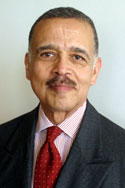ARCHIVES
OF EDITORIALS
March 25, 2004
In need of reform
The American criminal justice system is touted as
protecting the rights of the accused. It has been said that "it
is better to let the guilty go free than to imprison the innocent
falsely." However, the development of DNA tests has forced
the country to acknowledge that the prosecutorial system is seriously
flawed.
Americans have been shocked by the number of prisoners on death
row across the country who have been released from prison before
administration of the needle. Their innocence was indisputably
established by DNA. The substantial number of these last minute
reprieves has raised serious questions about the effectiveness
of criminal prosecution across the country.
The Innocence Project at the Cardozo Law School in New York was
established in 1992 by Barry Scheck and Peter Neufeld. Their researchers
have found numerous flaws in the prosecutorial process which have
led to the imprisonment of the innocent. They have categorized
these flaws as: mistaken identity, police and prosecutorial misconduct,
false confessions, incompetent lawyers, lying snitches, erroneous
serology, junk science, and faulty DNA.
As of this month the work of The Innocence Project has led to
the exoneration of 143 prisoners. Others not connected with the
Project have achieved the freedom of many others. Since 1997,
eight innocent black men have been freed after having been convicted
in Suffolk County. Four had been charged with rape or aggravated
rape, three had been charged with murder, and one had been charged
with armed assault with intent to murder.
There is no capital punishment in Massachusetts, but all had been
given lengthy sentences ranging from 9-25 years to life without
parole. Before they were released as innocent, they had already
served four years to 18 years. Any time in prison is a lot to
serve for a crime you did not commit.
Another aspect of the problem gets less attention. If so many
men have been released from prison as innocent of the crime for
which they were convicted, then the real perpetrators are still
at large. As eager as citizens might be to solve especially heinous
crimes, the public is still endangered if the innocent are convicted
while the real criminals roam free.
DNA evidence freed five of the men. In two of the cases it was
established that eyewitness testimony was faulty. In the case
of Shawn Drumgold who was convicted of murder, there is evidence
of official misconduct and perjured testimony.
A basic premise of the American criminal justice system is that
the accused is innocent until proven guilty. Over the years citizens
have come to rely on the system’s legitimacy. Despite the
presumption of innocence, people tend to believe that "where
there’s smoke there’s fire." People believe when
someone is accused of a crime, there must be a legitimate reason
for the arrest.
Now that the flaws of the criminal justice system are known, society
has a responsibility to establish systems to minimize the failures.
Failure to do so imposes an enormous injustice on minorities and
the poor who lack the financial resources to expose the inequities.
Home
Page

